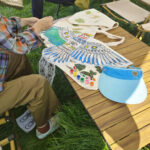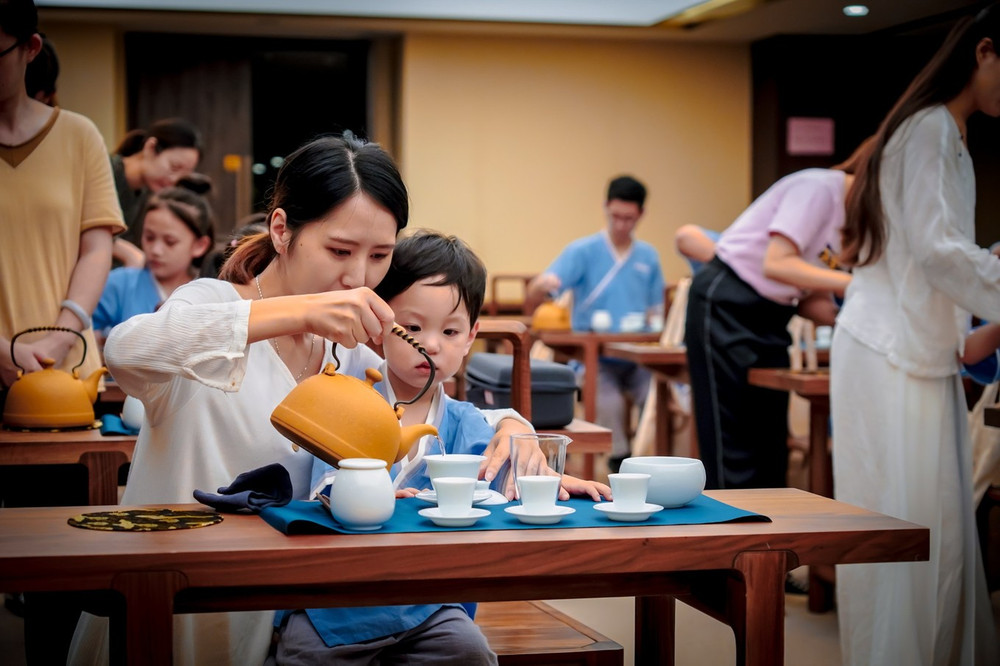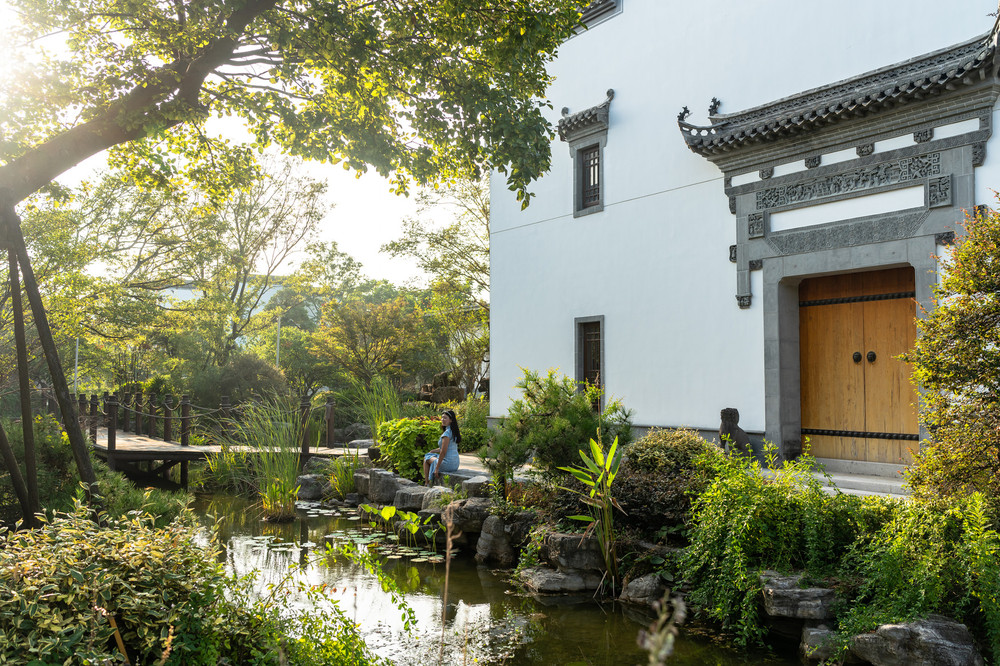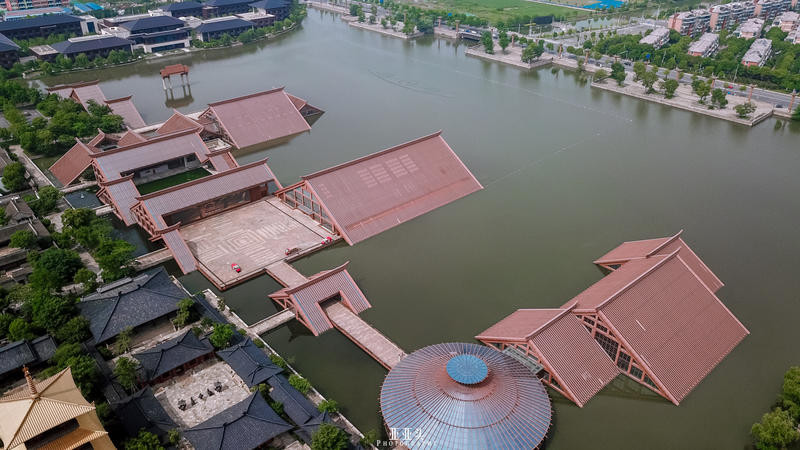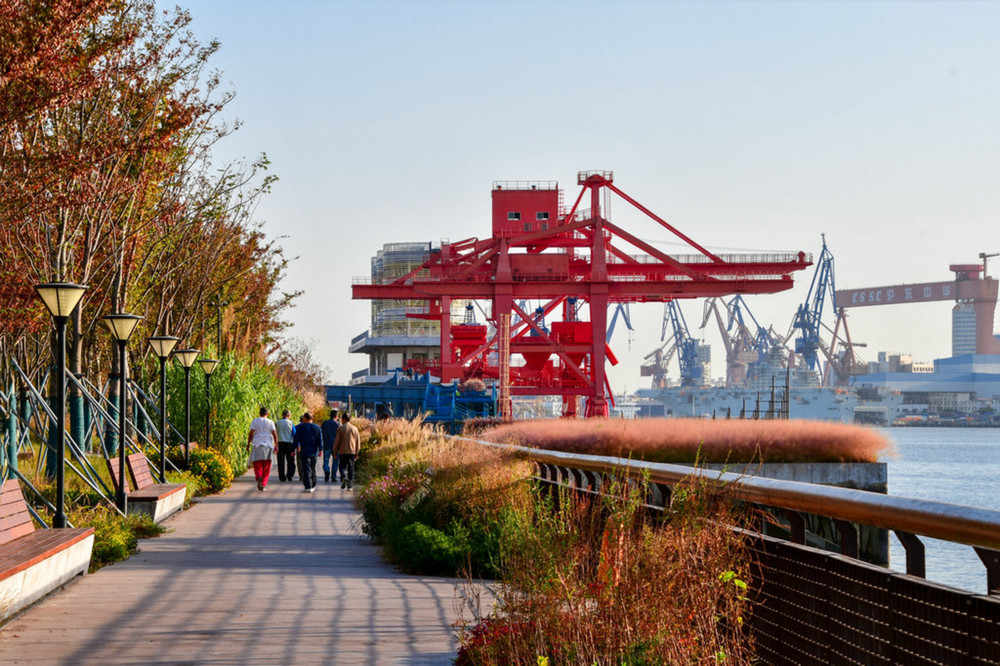Published on 2021-06-23 13:24.
Duration: 3 days, Time: June, Cost per person: 4000 yuan, Companions: Friends, Activities: Photography, Self-driving, Cultural, Weekend getaway.
The author visited these places: The Bund in Shanghai, Lujiazui, People’s Square, Peace Hotel, Huangpu River, Waibaidu Bridge, Xintiandi, Oriental Pearl Tower, Jinmao Tower, Baoshan Temple, Guangfulin Site, Zhiye Zen Temple.
Shanghai, where I grew up, holds all my emotions. It is a city with a history of thousands of years, which has seen many turbulent times and has left behind many old buildings and roads. In my free time, I like to wander around these old buildings to feel the old Shanghai charm. Shanghai is also a futuristic and globally renowned metropolis, filled with modern architectural designs, art galleries, and boutique shops. The sophisticated and fashionable people of Shanghai navigate effortlessly through the CBD’s steel jungle, buying in boutiques, dining in steaming hot restaurants, and strolling through the bustling streets and alleys. In this city they love and cherish, they live their lives with sentiment and style. The old and new of Shanghai are just a wall apart, a mix of Chinese and Western cultures. It’s the blend of the old and the new that gives Shanghai its unique, contradictory, and charming flavor.
This time, I drove the popular domestic compact SUV, the GAC Honda Vezel, to explore the unique charm of this international metropolis, Shanghai.
The Bund, with its bright nights, is one of the most representative silhouettes of Shanghai. On one side, there is a group of century-old European-style buildings. As the warm yellow lights come on, it’s like a reserved, steady, and luxurious old man, reading the footsteps of the times. On the other side, across the river, are the skyscrapers of Lujiazui, modern and bustling with lights. When the Bund’s bell rings, the century-old picture scrolls before your eyes like a lantern show, as if in another world, you will think of time and gradually forget the passage of time.
On the Bund, there is never a shortage of spectators. No matter in spring, summer, autumn, or winter, people flock to admire it, one wave after another. From People’s Square, along the straight road of Nanjing East Road, people come from afar, not afraid of the crowd, just to catch a glimpse of the Bund’s style. The Bund, which is both gentle and calm inside and out, always welcomes visitors from all over China and the world with an open mind and a tolerant attitude.
Like the unique charm of Shanghai, the Vezel, as a global model created by Honda, has the strength to lead world trends under a global perspective. In terms of appearance, the Vezel has a pioneering appearance with an aggressive SPORT style surround. The front face has a huge U-shaped air intake grille, wild and domineering. The grille is equipped with a delicate black mesh, and there are some silver chrome strips added around, enhancing the overall fashion and design sense.
Driving the Vezel past the entrance of Dianchi Road, this place is a well-known landmark for various wedding photography and internet celebrity photos. There is also a hotel full of historical sense on this road – the famous Peace Hotel. The Peace Hotel, which is familiar to the locals, is the most prestigious luxury hotel in old Shanghai and was once a paradise for celebrities and adventurers. Stepping into the Peace Hotel is like seeing the prosperity of old Shanghai, elegant and unpretentious.
As jazz melodies fill the air, the irresistible tune of ‘Rose Rose I Love You’ hums along. The octagonal stained glass ceiling allows the grand natural light to spill forth. The protruding terrace on the ninth floor of the Cathay Hotel could be dubbed the ultimate spot for romantic proposals. From dusk to nightfall, watching the Bund and Pudong’s lights flicker on, the descending darkness brings a gradual illumination of the Bund’s lights, creating a splendid scene under the night sky.
In June, Shanghai experiences continuous rain, the drizzle deterring tourists from visiting the Bund, yet offering a rare tranquility, especially on a rainy night. On such a night, driving along the Bund, each brick and stone is soaked with the marks of time. The rain dampens the roads, reflecting a lustrous glaze under the neon lights. In the night, complementing the calm river surface, gazing at the bright lights and flickering screens of the buildings across, presents a unique charm. Occasionally, the large screens display the phrase ‘I Love SH’. Living in Shanghai for decades, even the Bund, in this rainy night, still captivates with its beauty, the skyscrapers across the Huangpu River shrouded in mist, andThe Vezel, with its new ‘Earth Dreams Technology’ 220 TURBO power system, is a standout in its class. It boasts an impressive acceleration time of less than 9 seconds from zero to hundred, giving a full taste of its ‘little cannon’ power. Paired with the smoothness of its CVT transmission, it excels in dense urban traffic, making it easy to keep up with and overtake other vehicles. On slippery rainy roads, such as the Yan’an West Road viaduct, the 2020 Vezel’s Honda SENSING safety system shines. The LKAS Lane Keeping Assist System helps drivers correct the steering wheel for safe driving, while the LDW Lane Departure Warning alerts drivers to steer back on track when the vehicle drifts unintentionally. Additionally, the CMBS Collision Mitigation Braking System can slow down or brake in advance, preventing rear-end collisions. As the night falls, the Vezel’s classic fiber-optic LED combination taillights, with their exquisite design and excellent lighting effect, continue to impress.
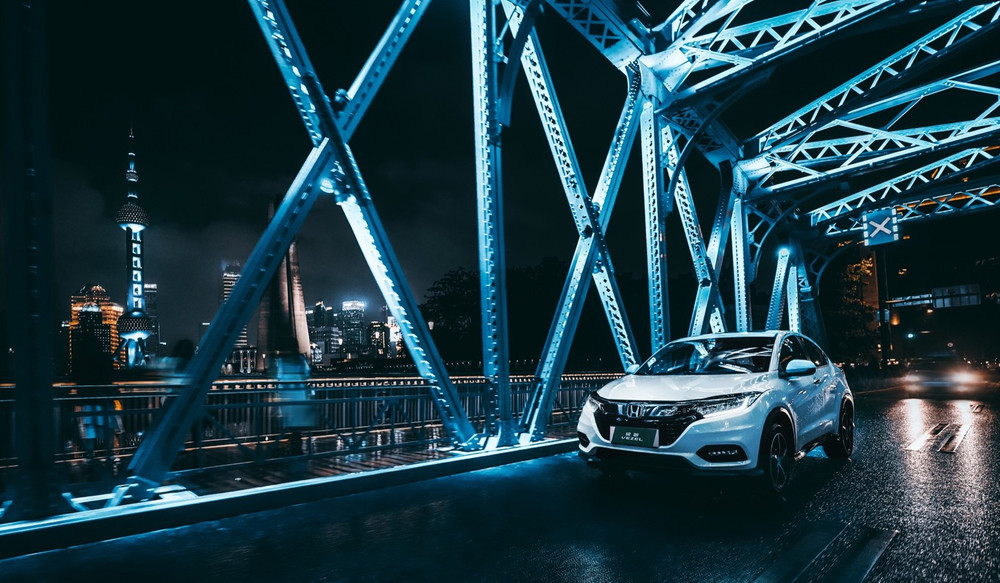
In the 1920s, Japanese writer Shoso Muramatsu published the best-selling novel ‘Magic Capital’, which was based on the actual situation inside and outside the Shanghai concession. Since then, ‘Magic Capital’ has become another name for Shanghai. The former Harbin Building at North Bund, once a hub for gangsters and ruffians, has now transformed into a creative cultural park, reflecting Shanghai’s magical nature. In the early 1940s, the Harbin Building and its surroundings were at the intersection of the concession and Chinese territory, making it one of the most complex areas of the Shanghai Public Concession. Today, with the transformation into a creative cultural area, featuring bookstores, music, art industries, and cafes, the ‘reformed’ North Bund has become a new landmark for the literati, and Hongkou has gained another ‘fun’ place.
Harbin Road, a seemingly forgotten path, is not long and sparsely populated. This small street, filled with British charm, is proudly referred to by the people of Hongkou as ‘Hongkou’s Xintiandi’. Standing on Harbin Road’s Number 2 Bridge, one can see the iconic ‘four-piece suit’ of Lujiazui—Oriental Pearl Tower, Shanghai Tower, Jin Mao Building, and the World Financial Center—as well as chimneys from the 1930s, old houses, traditional alleyways, and residential communities built between the 1950s and 1990s. A particular highlight is FRANKS STORE on this road, an American vintage store. The first floor is a coffee shop with cinema-style seating and vintage furniture, adding to its retro feel. I ordered an iced latte, which was quite good. The second floor is a vintage clothing boutique, with both the decoration and clothing reflecting an American retro casual style, mostly featuring niche vintage brands from Japan, Europe, and the United States, with a strong sense of retro design, mainly focused on men’s wear. The owner, Frank, after studying in Japan and traveling the world, has built his own ‘Ameri-kaji’ here, a Japanese term for American casual style. These pioneers bring different cultural trends from abroad to Shanghai, creating the city’s unique blend of cultures and inclusiveness.
Shanghai’s Grandpa’s Antique Store—Xiao Fangting—is a must-visit. Driving past Changshou Road, I recall a visit to an interesting antique shop here a long time ago. Xiao Fangting, a well-known restaurant in Shanghai, is next to the antique store. On previous visits, it was closed, but this time I was finally able to visit! Walking into the antique store, the room is filled with treasures from all over the world. The owner, a grandfatherly figure, warmly greets visitors and patiently tells you how to use each antique, sharing the history and stories behind them. These are all items he has collected from around the world. You can see Edison phonographs and music boxes from over a hundred years ago, antique ceramics from Italy, various cute sculptures and antique dolls, and out-of-print antique pianos, making you feel as if you are in an old European mansion. It feels as if the old man has realized my dream: to travel the world, collect various vintage items, and open an antique shop in his old age to spend the rest of his life. As Neil Gaiman wrote in ‘American Gods’: ‘What I say is, a town isn’t a town without a bookstore. It may call itself a town, but unless it’s got a bookstore, it knows it’s not foolin’ a soul.’ In this era where print media is gradually marginalized, a good bookstore in a city should be cherished.I recently visited a bookstore called ZiWU The Store, which is a unique experience as it requires a QR code to purchase a ticket for entry at a cost of 50 yuan. This ticket can be exchanged for a cup of coffee or soft drink next door.
In June, I embarked on a 3-day adventure with friends, spending 4000 RMB per person. Our activities included photography, self-driving, cultural exploration, and a weekend getaway. We explored iconic places such as The Bund, Lujiazui, People’s Square, Peace Hotel, Huangpu River, Waibaidu Bridge, Xintiandi, Oriental Pearl Tower, Jinmao Tower, Baoshan Temple, Guangfulin Site, and Zhiye Zen Temple. This trip was published on June 23, 2021, at 13:24.
Shanghai, the city where I grew up, holds all my emotions. With a history spanning thousands of years, it has witnessed many turbulent times, leaving behind numerous old buildings and streets. In my spare time, I enjoy wandering around these old structures, feeling the charm of old Shanghai. Shanghai is also a futuristic, world-renowned metropolis filled with modern architecture full of design sense, art galleries, and boutiques. Stylish Shanghai residents effortlessly navigate the CBD’s steel jungle, buying in boutiques, dining in steaming restaurants, and strolling through the bustling streets. In this city they love and cherish, they live their lives with sentiment and style. The old and new of Shanghai are just a wall apart, a mix of Chinese and Western cultures. It is the combination of the old and the new that gives Shanghai its unique, contradictory yet charming flavor.
For this trip, I drove the domestically popular small SUV, the GAC Honda Vezel, to explore the unique charm of this international metropolis. The Bund, with its ten-mile foreign settlements, is a silhouette that represents Shanghai. On one side are the century-old European-style buildings, which, when illuminated by warm yellow lights, resemble a reserved, calm, and luxurious elder, reading the footsteps of the times. On the other side, across the river, are the skyscrapers of Lujiazui, modern and vibrant with moving lights. When the Bund’s clock strikes, the century-old images flash before your eyes like a lantern show, making you feel as if you are in a different era, remembering time while gradually forgetting it. On the Bund, there is never a lack of spectators. No matter the season, people flock to admire it, one group after another. From People’s Square, along the straight road of Nanjing East Road, people come from afar, undaunted by the crowds, just to catch a glimpse of the Bund’s scenery. The Bund, both refined and gentle, always welcomes visitors from all over China and the world with an open embrace, embodying the spirit of ‘isn’t it a pleasure to have friends coming from afar?’ This is the unique charm of Shanghai, and the Vezel, as a globally oriented model crafted by Honda, is endowed with the strength to lead global trends under a global perspective.
Externally, the Vezel is full of avant-garde charm with its aggressive SPORT-style surround. The huge U-shaped air intake grille on the front face is wild and domineering. Inside the grille is an exquisite black middle net, and there are some silver chrome strips added around it, enhancing the overall sense of fashion and design. Driving the Vezel past the entrance of Dianchi Road, this is a well-known landmark for various wedding photography and internet celebrity photos. There is also a hotel full of historical sense on this road – the famous Peace Hotel. The Peace Hotel is not unfamiliar to local people in Shanghai. It is the most prestigious luxury hotel in old Shanghai and was once a paradise for celebrities and adventurers. Stepping into the Peace Hotel is like seeing the prosperity of old Shanghai, elegant but not exaggerated. As jazz music plays, one can’t help humming the melody of ‘Rose, Rose, I Love You’. The octagonal colored glass ceiling allows natural skylight to grandly fall. The protruding terrace on the 9th floor of the Cathay Hotel can be called a holy place for dating and proposing. From dusk to night, watching the lights on the Bund and Pudong come on one after another. As night falls, the lights on the Bund gradually shine brightly. It is another magnificent and gorgeous scene under the night. In June in Shanghai, it is continuously rainy. The pattering light rain deters tourists from going to the Bund, but there is a rare tranquility, especially on this rainy night. On a rainy night, driving on the Bund, every brick and stone is impregnated with the traces of time. The rain wets the road and, under the reflection of neon lights, emits a glazed luster. In the night, combined with the leisureliness of the calm river surface and looking at the bright lights and flickering large screens of the opposite buildings from a distance, there is a unique charm. From time to time, the words ‘I love SH’ will also appear on the large screen. Living in Shanghai and having seen the Bund for decades, on this rainy night, I am still amazed by its beauty. The skyscrapers on the other side of the Huangpu River are hazy in the misty rain, and the international architecture in Puxi is brilliant and resplendent.This is the romance that belongs to Shanghai. For the photo-associated location, driving the Binzhi across the Waibaidu Bridge. The dark blue lights of the iron bridge and the Lujiazui iron in the distance complement each other. It has a bit of the charm of ‘cyberpunk’. The Binzhi is equipped with the new ‘Earth Dreams Technology’ 220 TURBO power system. Its performance is outstanding among the same displacement. The acceleration time from 0 to 100 kilometers per hour is less than 9 seconds, fully allowing me to experience the strength of a ‘pocket rocket’. Coupled with the excellent smoothness of the CVT gearbox, it performs particularly well in urban traffic conditions with relatively dense traffic. Following and overtaking are all effortless. Due to the slippery road on a rainy day, the vehicle is driving on the viaduct on West Yan’an Road. At this time, the Honda SENSING safety super-sensing system equipped on the 2020 Binzhi shows its extraordinary strength: the LKAS lane keeping assist system, assisting drivers in correcting the steering wheel to ensure the safe driving of the entire vehicle. When a vehicle unintentionally deviates from its lane, the LDW Lane Departure Warning feature promptly alerts the driver to correct the steering wheel. Concurrently, the CMBS Collision Mitigation Braking System can also help us decelerate or even brake in advance, thereby preventing the possibility of a rear-end collision. The night is still young, and today’s self-driving journey comes to a close. In the night, the classic fiber-optic LED combination taillights of the Vezel are exquisitely designed and provide excellent illumination. North Bund, hiding niche beauty. In the 1920s, based on the actual situation inside and outside the Shanghai concession, Japanese writer Shōfū Muramatsu published the best-selling novel ‘Magic Capital’. Since then, ‘Magic Capital’ has become another name for Shanghai. Over the past few decades, when people mention Shanghai, they still cannot find any other word that fits the description of this ‘incredible’ city better than the term ‘Magic Capital’. The Harbin Building at North Bund, once a place where ruffians and hooligans roamed, has now been transformed into a cultural and creative park favored by tourists, reflecting the magic of Shanghai. The Harbin Building and its surrounding areas, in the early 1940s, were at the intersection of the concession and the Chinese territory and were one of the most complex areas in the Shanghai Public Concession. Now, with cultural creation, bookstores, music, fine arts industries, and cafes, North Bund has transformed into a new landmark for the artistic youth, giving Hongkou another place to enjoy. Harbin Road seems to be a forgotten road, short and with few pedestrians. This small road, filled with British charm, is proudly called ‘Hongkou’s Xintiandi’ by the people of Hongkou. Standing on Harbin Road Bridge No. 2, not only can you see the iconic ‘four pieces’ of Lujiazui – the Oriental Pearl Tower, Shanghai Tower, Jin Mao Building, and Shanghai World Financial Center, but you can also see the chimneys from the 1930s, old houses, old-style alleys, and residential communities built between the 1950s and 1990s. I particularly like FRANKS STORE on this road, which is an American retro store. The first floor is a coffee shop with cinema-style comfortable seating and vintage furniture, adding to the retro feel. I ordered an iced latte, which tasted quite good. The second floor is a vintage clothing boutique, with the store’s decoration and clothing all in American retro casual style. Most of the clothing comes from niche retro brands from Japan, Europe, and the United States, with a strong sense of retro design, mainly focused on men’s wear. The owner of this retro store is Frank, who returned from studying in Japan and built his own ‘Ameri-kaji’ here, which is a Japanese term for American casual style, from his interests to traveling around the world. It is precisely because of such pioneers who brought different cultural trends from abroad to Shanghai that Shanghai’s Haipai culture and its inclusiveness were created. Grandpa’s antique shop in Shanghai – La Petite Fontaine. Driving past Changshou Road, I remembered a very interesting antique shop that I had visited here a long time ago. La Petite Fontaine is a very famous restaurant in Shanghai, and next to it is La Petite Fontaine antique shop. The previous times I came, it was not open. This time I can finally visit it! Entering the antique shop, the whole room is filled with a dazzling array of antiques from all over the world. The grandpa owner will greet you warmly. The old gentleman will patiently tell you the usage of an antique andI feel that the life of the old gentleman has realized my dream: traveling around the world, collecting various retro items, and opening a second-hand grocery store when I am old and spending the rest of my life.
Neil Gaiman wrote in ‘American Gods’: ‘What I say is, a town isn’t a town without a bookstore. It may call itself a town, but unless it’s got a bookstore, it knows it’s not foolin’ a soul.’ In this era when print media is gradually being marginalized, a good bookstore in a city should be cherished. The bookstore I came to this time is called ZiWU Modern Media Store. To enter and visit, you need to scan the code and buy a ticket for 50 yuan. You can exchange it for a cup of coffee or soft drink next door. The overall design of the bookstore is a square geometric shape. There are not too many curved surfaces and it is very delicate. Except for a walking staircase up and down, almost all you can see are bookshelves and books. The first floor is mainly photography and magazines. There are also sofas for rest in the lobby. Behind the sofas is the old record area with a fashionable black tone. There are many kinds of books on the second floor. There are benches where you can sit and read. Next to the bookstore is a coffee shop. It does have the style of an art gallery. There are many decorative design works. The ticket includes beverages and there are also other alcoholic beverages. The third floor is not open and is a work area. In fact, there are also some areas on the second floor where it is not convenient to be disturbed. The whole bookstore is very quiet and there are very few people on weekdays.
Just as the city’s libraries present us with a refined concept of life, Vezel has consistently attracted young consumers with its artful enjoyment of life. From the industry’s first ‘Pioneer Art Marketing’ in 2014, to the ‘Industry People Marketing’ tailored to capture the hearts of those who ‘love individuality and cutting-edge trends’, and the ‘Art of Enjoying Life Design Marketing’ proposed by the 2020 Vezel, Vezel has engaged in different trendy marketing strategies to dialogue precisely with the youth, showcasing the ideal urban lifestyle in full bloom. Park the car near the bookstore in front of the graffiti wall and take a close look: 17-inch rims paired with highly recognizable winged LED headlights. The headlights on both sides broaden the visual effect of the grille, forming Honda’s iconic ‘Wing’ design. The roof starts to extend downward from the B-pillar, forming a fastback shape; the rear door handle is cleverly integrated at the position of the C-pillar, and the ‘hidden’ design makes the rear door look much cleaner. The hidden rear door handle design not only enhances the unity of the whole vehicle but also, when combined with the futuristic ‘petal-like’ wheels and smooth body lines, gives the Vezel a performance hatchback’s visual appeal. The practical interior design continues, with each functional area arranged reasonably, and the commonly used function buttons remain within easy reach. The interior design of the Vezel is not particularly avant-garde, but it is particularly convenient to use, and this relatively traditional design also looks particularly welcoming. Adhering to Honda’s unique ‘MM’ concept, it demands that designers bring consumers a more comfortable and spacious riding experience within a limited space. The rear magic seats use a unique 4/6 split design, and the backrest angle is not only adjustable in two levels but can also be freely adjusted according to the number of luggage items to change the rear space.
Baoshan Temple, a late Tang dynasty palace-style building in Shanghai, is not only prosperous but also has a long history, tracing back to the 4,000-year-old Guangfulin, and the Baoshan Temple, which was built during the Zhengde period of the Ming Dynasty. This time, driving the Vezel through time and space, we came to the 500-year-old Baoshan Temple, which is also the largest temple in Shanghai, located on the Lianqi River in Luodian Town, Baoshan. Entering Baoshan Temple, we are shocked by the palace-style architectural style of the late Tang dynasty, built with pure wooden mortise and tenon, following the traditional layout of the Jialan vertical axis, step by step, the structure is rigorous, the temple is majestic, and the entire building group is well-arranged naturally, integrating heaven and earth, expressing the profound and subtle Buddhist thoughts. Walking among them, we marvel at the grandeur of the architecture. At this moment, the rain is pouring, the tourists of Baoshan Temple have dispersed, leaving only the sound of the falling rain, echoing the whispers of the past century. Light a stick of incense, drink a pot of tea, andThe Baoshan Temple, a serene and magical haven, is strategically located at No. 518 Luoxi Road, Luodian Town, adjacent to the Lianqi River. Given its distance from the city center, it’s advisable to set off early and be mindful that it closes relatively early. Admission to this sacred site is 10 yuan, and visitors must purchase a 10 yuan incense voucher at the entrance, with cash being the only accepted payment method.
As the rain intensifies, one might find themselves parking by the roadside, where the ground reflects the outline of a temple lying quietly in the rain. This sight is both solemn and peaceful, inspiring a sense of reverence. The origin of Shanghai, Guangfulin, dates back 4000 years and is considered the birthplace of the city. A local saying goes, “There was Songjiang Prefecture before there was the Bund, and there was Guangfulin before the history of Songjiang.” The Guangfulin site was discovered in 1958, with a trial excavation in 1961, and formal excavations began in 1999, continuing to this day. The site spans over 40,000 square meters, making it the largest archaeological project in the history of Shanghai.
For those seeking a different kind of retreat, the Cloud Bookstore is a must-visit. Known as the most beautiful bookstore in Shanghai, it allows visitors to touch the clouds while immersed in books. This bookstore is nestled within a well-preserved Ming Dynasty high house, blending ancient architecture with modern design. The space is divided into three courtyards and two-story pavilions, with one courtyard adorned with pine trees, named the Pine Stone Realm, and another presenting the concept of ‘floating clouds in the sky,’ called the Water Cloud Village. This has become a new hotspot for taking photos and leaving memories. The first floor primarily sells various books and cultural and creative products, along with a café offering coffee and tea. The second floor hosts periodic exhibitions, making it an ideal place to escape the city’s hustle and bustle for a moment of leisure and tranquility.
Zhiye Zen Temple stands as a memorial to the good deeds of Zhiye Zen Master, known for his medical assistance and rescue efforts among the people of Songjiang. The temple complex includes facilities such as the Mountain Gate Hall, Bell Tower, Drum Tower, Ancestor Hall, Fivefold Manjushri Hall, Mahavira Hall, Guanyin Hall, Ksitigarbha Hall, Five Contemplations Hall, Prajna Chamber, and Contemplation Pavilion. The layout of the Zen Temple is reasonable, simple and elegant, and exquisitely built, making it another distinctive Buddhist sacred site and an important venue for the study of Buddhist teachings in Songjiang and Shanghai.
Not far from the Zen Temple, one can see the Fuling Pagoda. Perhaps because they are both Tang Dynasty-style architecture, the Fuling Pagoda bears a resemblance to the wooden pagoda of Kiyomizu-dera in Kyoto, exuding a strong sense of history. Surrounded by red brick walls, the setting sun casts mottled shadows on the walls, with monks entering and exiting from time to time, adding to the charm.
“In the eyes of those who pass by without entering the city, the city is one thing; in the eyes of those who are trapped within the city and do not come out, it is another thing; when people first arrive, the city is one thing, and when they leave forever, it is another thing… The city does not reveal its past, but hides it like the lines on a hand, written in the corners of the streets and alleys, the railings of the windows, the handrails of the stairs, the lightning rods, and the flagpoles…” This is the city described by Calvino in ‘Invisible Cities’.
Every city has its own inherent impression and future appearance. As the city develops, it is also changing day by day. The once familiar street scenes and objects are slowly disappearing from people’s sight. In those unseen corners and at the ends of streets, there are still traces and memories of the past hidden. In the midst of those pasts and futures, the full picture of the city is depicted. Such a collision of new and old constitutes the daily beauty of Shanghai and also records the rhythm and changes of this city.
Pudong New Area, this new city, is like a magic box that has been sealed for many years and suddenly opened. It is filled with a new fearless power all around. The wide and bright streets, orderly buildings, large green environments, sense of space, sense of order, and sense of technology. Everything is so young and has a fierce sense of forging ahead. It invites you to step on the gas and race forward.
Similar to Pudong New Area, the Honda Vezel, as Honda’s newly launched global small SUV, has been enthusiastically pursued by young people around the world since its launch. Since Vezel embarked on its global journey in 2013, it has been on sale in nearly 130 countries on five continents around the world for nearly eight years. The cumulative global total sales volume has reached 4.5 million. On average, a new owner of a Vezel series model is born every 51 seconds.In China, Vezel’s sales have exceeded 10,000 for 14 consecutive months. In nearly seven years, the cumulative sales volume has exceeded 900,000. The degree of popularity makes many models of the same level unable to catch up.
When night falls, Shanghai finally shows its true appearance. There is a somewhat dizzying extravagance and a somewhat damp southern smell. In the contradiction intertwined by the new and the old, it is so proud and so fascinating. Perhaps this is my Shanghai complex.
Check-in places: The old street of the Bund, Waibaidu Bridge, Peace Hotel, Harbin Road in North Bund, Dutch style street, ZHIWU Bookstore, Xiaofangting, Lujiazui, Baoshan Temple, Guangfulin.





